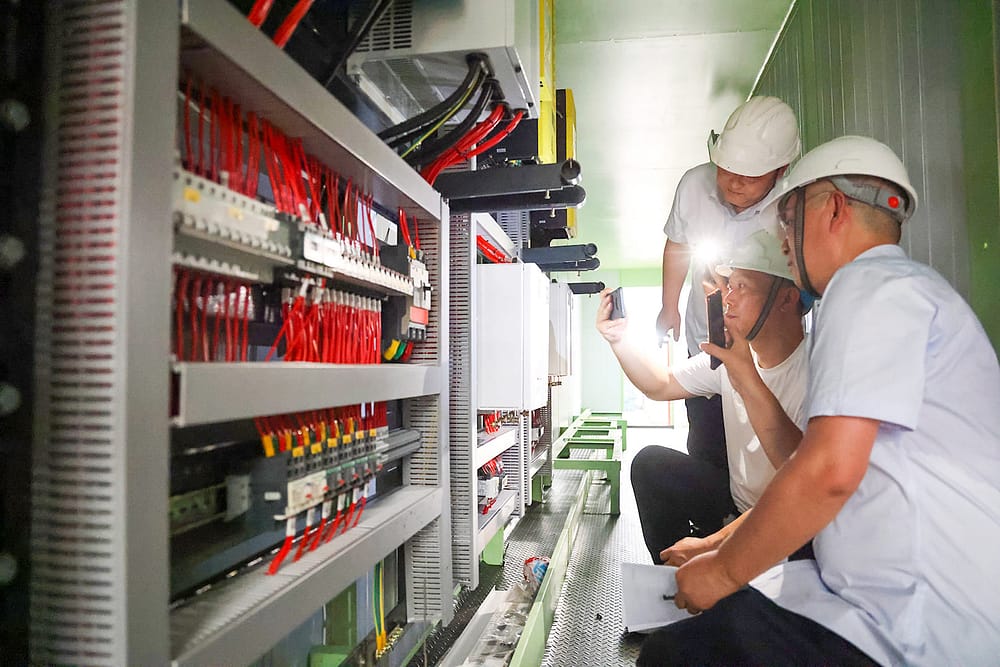Top Tips for Effective Electrical System Troubleshooting
Fixing electrical systems calls for a systematic method, grounded in an extensive understanding of electric principles and safety methods. The nuances of effective troubleshooting expand past simple technical knowledge; recognizing how to document searchings for and prioritize safety can dramatically affect outcomes.
Understand the Basics
Comprehending the fundamentals of electrical systems is necessary for reliable troubleshooting, as a strong structure permits technicians to detect and solve problems more successfully. A thorough understanding of electric concepts, such as voltage, present, resistance, and power, is crucial in identifying the source of issues. Voltage is the electrical possible difference that drives current with a circuit, while resistance opposes the flow of present, impacting the total performance of the system.
Familiarity with circuit components, including resistors, capacitors, diodes, and switches, is additionally vital. Each element plays an unique duty in circuit actions and can influence performance when malfunctioning. In addition, comprehending series and parallel circuit configurations is important, as these plans influence the distribution of voltage and present within the system.
Technicians need to be conscious of potential hazards, such as shock and brief circuits, to carry out secure troubleshooting methods. By understanding these foundational concepts, service technicians enhance their ability to perform efficient diagnostics and fixings, ultimately leading to improved performance and dependability of electrical systems (electrical system troubleshooting).
Gather Necessary Tools
Reliable troubleshooting of electrical systems calls for the right set of devices to detect and settle issues precisely. A well-appointed professional can considerably improve performance and efficiency in recognizing troubles. Essential devices consist of a multimeter, which gauges voltage, present, and resistance, enabling specific examinations of electric components. Secure meters are also important for measuring present without disconnecting the circuit, making sure safety and benefit.
Additionally, shielded hand devices such as screwdrivers, pliers, and cord strippers are vital for safely controling electrical connections. It is additionally recommended to have a circuit tester accessible to validate the visibility of voltage in electrical outlets and wires. For even more complex systems, a thermal imaging cam can aid detect overheating parts, suggesting prospective failures.

Comply With a Systematic Approach
Having collected the appropriate tools, the next action in troubleshooting electric systems is to follow a methodical approach. A methodical method makes sure that specialists can determine mistakes successfully and accurately, reducing downtime and stopping unneeded repairs.
Begin by reviewing the system's schematic diagrams and specs. Understanding the design and functional specifications will supply context for diagnosing concerns. Next, isolate the trouble area by utilizing a procedure of elimination. This entails monitoring each part methodically, beginning with the source of power and functioning in the direction of the lots.
Use testing equipment, such as multimeters and oscilloscopes, to gather unbiased data about voltage, existing, Visit This Link and resistance at different points within the system. This empirical evidence will certainly assist your troubleshooting efforts and assist to verify or eliminate possible reasons for failure.
Furthermore, take into consideration ecological aspects that might influence the system's efficiency, such as temperature variations or wetness access. A detailed assessment of wiring, connections, and elements will guarantee that all possibilities are made up.
Record Your Findings
Complete paperwork is essential in the troubleshooting procedure of electric systems. This method not just help in recognizing the root cause of the problem however additionally serves as a reference for future troubleshooting efforts.

Additionally, preserving a log of components replaced or repair services done is very useful. This info supports stock administration and can aid examine the long life and integrity of specific components.
Eventually, the documentation procedure must be comprehensive yet succinct, making it possible for simple retrieval and review - electrical system troubleshooting. By focusing on comprehensive documentation, specialists can produce a valuable expertise base that not only help in present troubleshooting but likewise empowers future upkeep initiatives, thereby boosting general system dependability

Prioritize Security Procedures
Acknowledging the integral dangers associated with electrical systems is important for guaranteeing safety during troubleshooting. Electric shock, burns, and devices damage are just a few of the potential hazards that professionals encounter. Prioritizing precaution is not only a lawful commitment but also an ethical critical that safeguards both the professional and the surrounding setting.
Prior to beginning any read this article troubleshooting job, professionals need to put on suitable personal protective equipment (PPE), consisting of protected gloves, security glasses, and flame-resistant clothes. Guaranteeing that the workspace is dry and devoid of mess can significantly lower the danger of accidents. In addition, it is necessary to de-energize circuits before beginning any work, validating that they are not live with using a multimeter or voltage tester.
Establishing clear communication protocols with staff member is likewise essential; this makes sure that every person knows possible dangers and the status of the electrical system being dealt with. Having an emergency action plan in location can confirm important he said in the event of a case. By prioritizing precaution, professionals can properly alleviate risks and promote a more secure work environment.
Conclusion
Reliable electric system troubleshooting depends on an extensive understanding of basic principles and a systematic method. Focusing on safety procedures ensures the health of people entailed and the stability of the electrical system.
Comments on “Enhance performance with innovative mechanical system optimisation support.”